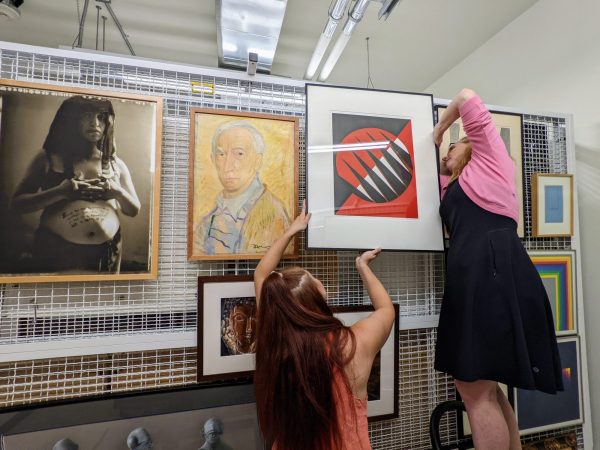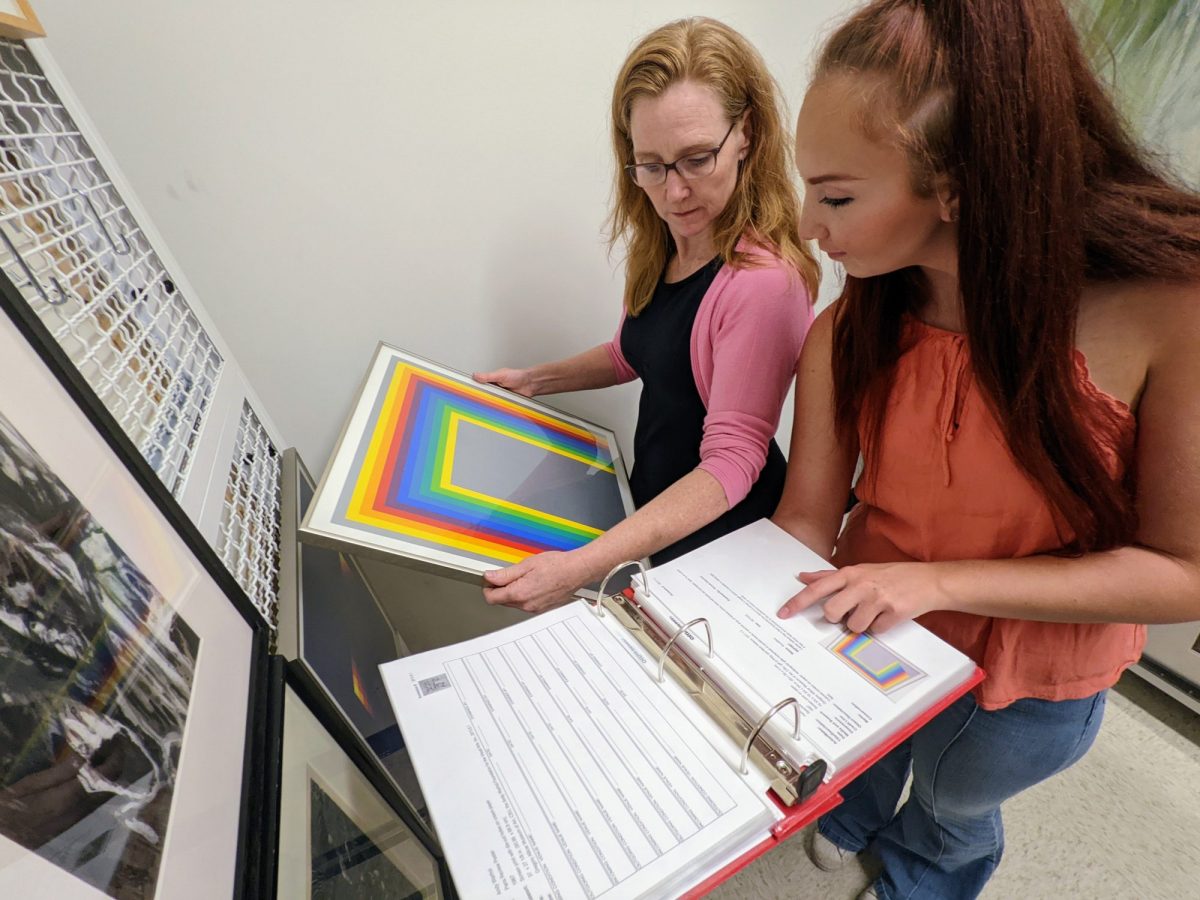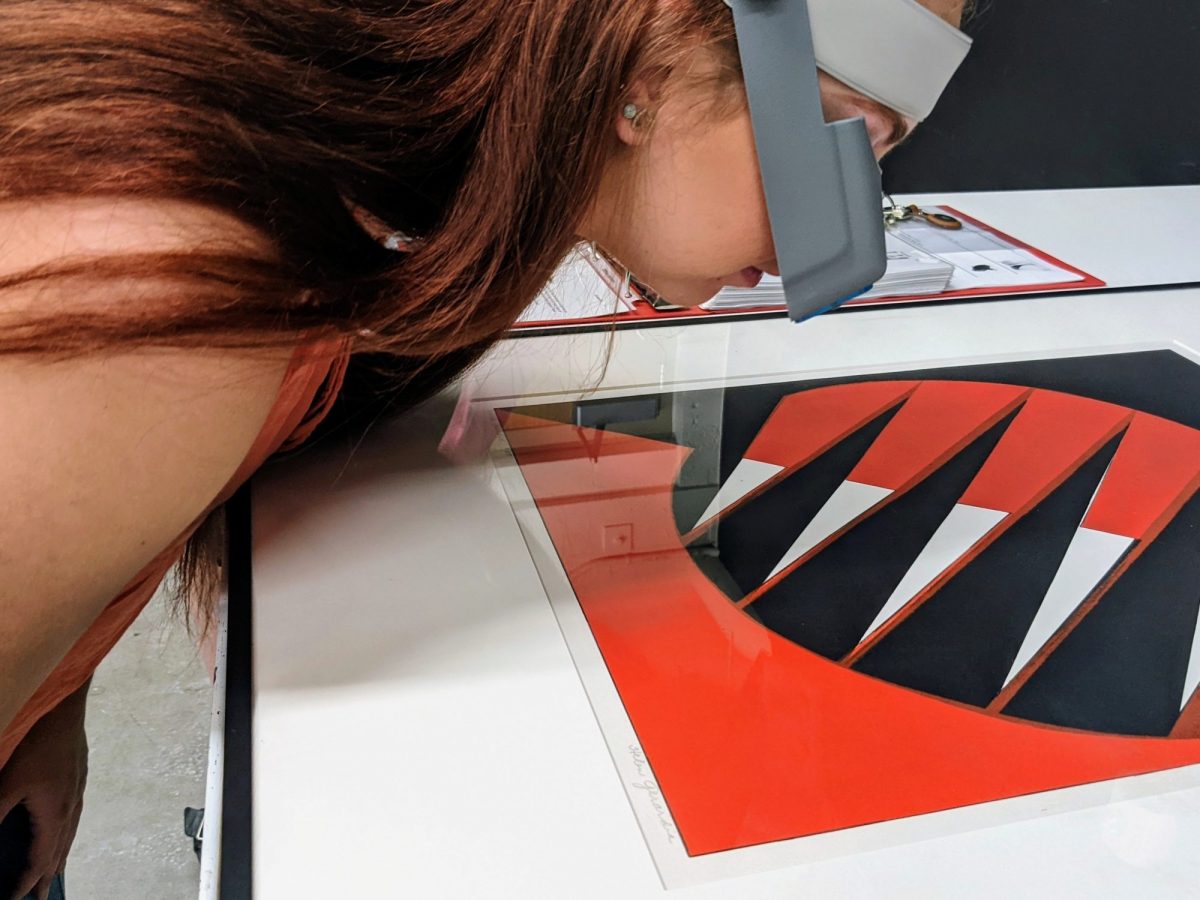
When walking into the Gregory Allicar Museum of Art, it is easy to get lost in the thoughtfully curated and aesthetically engaging exhibitions that fill 10,000 square feet of gallery and teaching spaces. The museum hosts world-class exhibitions year-round and provides the CSU and Fort Collins community with an exceptional resource that supports the vibrancy of the Colorado art community. Dedicated to educational vitality, embracing all audiences, and honoring a diversity of artmaking across time, GAMA is a cornerstone of Colorado State University’s art initiatives.
But the museum has much more to offer than what meets the eye, something that Michelle Malenfant (BFA, 2023) learned first-hand when working as an intern in the museum’s collections department, alongside Suzanne Hale, Registrar and Collections Manager.

Born and raised in Dallas, Texas, Malenfant learned about the business of art from a young age. Her father owns an art gallery, and that exposure sparked her love of art and an interest to take over the operations of her father’s gallery. While pursuing a double major in art history and economics, Malenfant took Hale’s class and decided she wanted to do a summer internship with the museum. For seven weeks, Malenfant worked 14 hours a week for 3 academic credits.
“[From the internship] I was hoping to learn a lot more about art from the museum perspective, because previous to this, I only had experiences within the gallery world. As I've learned throughout this internship, things are done very differently. There have been things I've learned, like storage spaces and condition reporting, for example, that I can implement when I eventually take over my dad's art gallery,” she says.
The unique relationship between the museum and the Department of Art and Art History provides opportunities for real-life museum work where students can make connections between what they learn in a classroom setting and apply it hands-on. By providing experience in an accredited art museum with exceptional collections management, students are better prepared to enter the competitive field of museum work. And, GAMA’s interns provide much-needed support to the museum.
Museum staff do a great deal of time-intensive, detail-oriented work to organize, preserve, prepare for exhibition, and catalog GAMA’s permanent collection of almost 5,000 objects. These works of art include prints, photographs, paintings, sculptures, textiles, ceramics, and decorative art objects from cultures around the world and span more than 2,000 years.
“There is a big benefit in working with students,” says Hale, “Once students are trained, they can provide all kinds of help for us. Sometimes I just need help with packing stuff up, but I try to give them a bigger project to do, like Michelle did with the condition report binder. They get great experience, and they can go on to use what they've studied here. It gives us more use of our teaching culture.”


The biggest project Malenfant worked on at GAMA was a conditions binder for the travelling exhibition Off-Kilter, On Point. The binder contains conditions reports on each of the items, as well as installation and shipping and handling instructions. This information helps ensure that each work is handled with care while it is away from the museum.
For Malenfant, collecting condition reports involved looking at each piece of work under a magnifying glass, both literally and figuratively, to identify any condition issues and reviewing the notes and reports of conservators to aid in this examination. Detailed images of condition issues of each object were taken and entered into both the museum record and the binder. While compiling the binder, Malenfant learned new vocabulary for explaining the quality of materials and the terms related to the types of damage that can occur. She also assisted with creating materials for shipping and documenting the process of packing each item to ensure safe shipping. She then organized the binder to make it easy for others to understand.

“Each institution will receive the binder and be able to look at the condition of each object, as well as instructions for shipping and handling and how to install each object,” says Malenfant. “The binder will receive a condition report update at each institution when it arrives and as it leaves. This way, we can identify if something has changed with the condition of the object, we know when and where that would have happened.”
“The condition reporting was a really good experience for me to learn language to talk about art so I could speak about a work to direct someone and make it understandable for someone else.”
“My time at the Gregory Allicar Museum of Art has afforded me many opportunities to learn more about the operations of a museum as well as the duties and responsibilities of a collections manager and registrar,” says Malenfant. “I was able to work on both large and small projects for the museum and I felt excited everyday walking into the collections area to see what would be next. I honed my abilities and knowledge within collections management, conservation, handling, and more. This internship has provided me the opportunity to learn many new tools and skills that I know I will continue to utilize throughout my education and career.”
"This internship has provided me the opportunity to learn many new tools and skills that I know I will continue to utilize throughout my education and career."
In addition to the specific skills that Malenfant learned while working on the binder, she also formed great relationships.
“I really enjoyed the community at the museum,” she says. “It’s a lovely, small, and tight-knit community. Right off the bat, everyone was so welcoming and willing to answer any questions that I had. That immediately made the environment feel good. It was not only fun, but also very educational and informative.”
